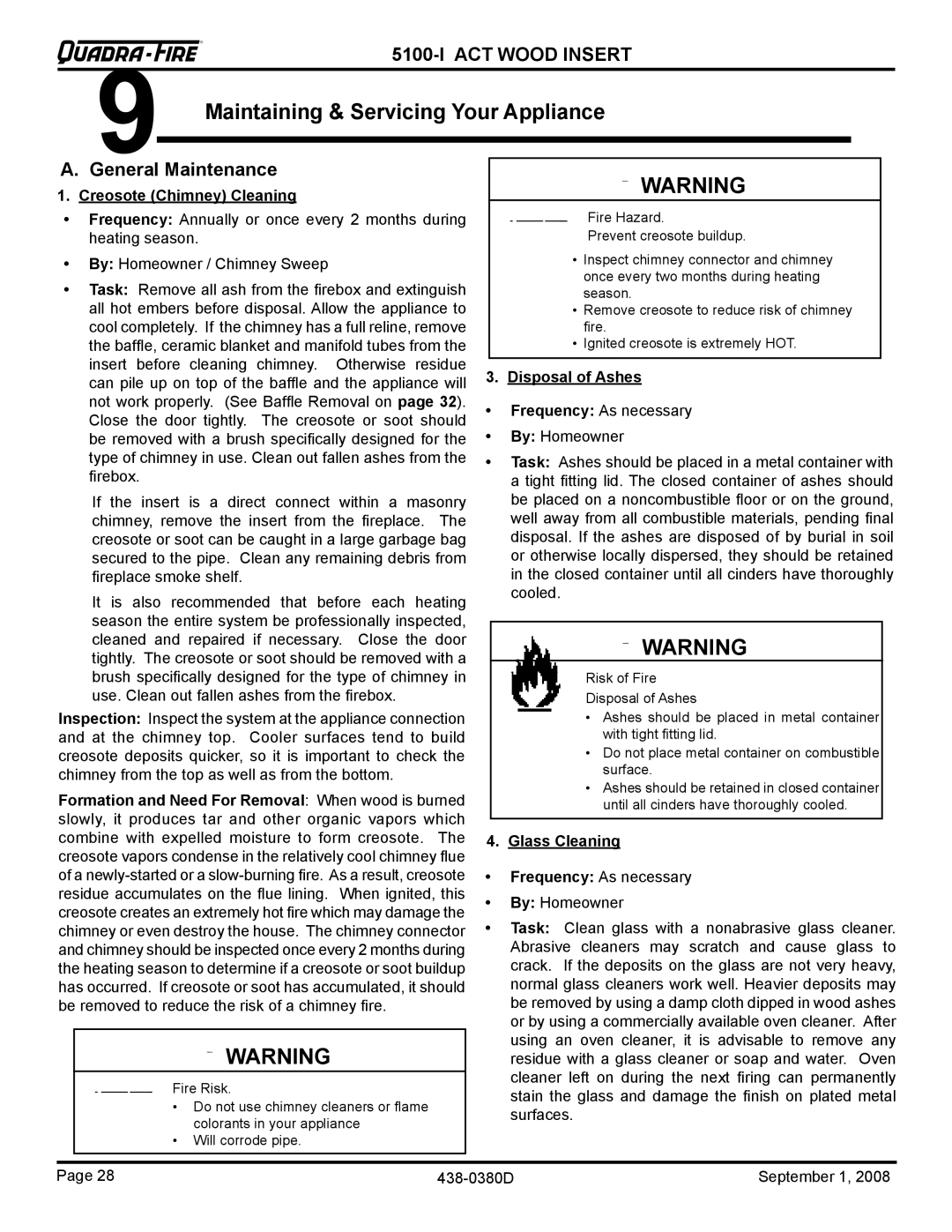5100I-NL-B, 5100I-GD-B specifications
Hearth and Home Technologies has established itself as a leader in the home heating industry, offering a wide range of high-quality fireplaces. Among their standout products are the 5100I-GD-B and 5100I-NL-B models. These two direct vent gas fireplaces not only enhance the aesthetics of a home but also provide efficient heating solutions.The 5100I-GD-B model boasts a contemporary design that fits well in modern interiors. Equipped with a glass front, it allows for an unobstructed view of the flames, creating a cozy atmosphere in any space. The unit's high-efficiency burner maximizes heat output while minimizing gas consumption, making it an eco-friendly choice for homeowners. Additionally, the electronic ignition system ensures reliable startups, while the integrated control panel offers easy adjustments for flame height and heat settings.
On the other hand, the 5100I-NL-B model presents a more traditional design, featuring a clean face that blends seamlessly with various décor styles. Like its counterpart, this model is also engineered for efficiency, offering an impressive Annual Fuel Utilization Efficiency (AFUE) rating. This makes it an excellent choice for those looking to reduce energy costs without sacrificing comfort. The 5100I-NL-B is also equipped with an advanced combustion system that ensures complete fuel combustion, resulting in fewer emissions and a cleaner burn.
Both models feature optional accessories, including decorative media options like logs or stones, allowing homeowners to customize the look of their fireplaces. The direct vent system allows for easy installation in various locations, as it vents gases directly outside, ensuring indoor air quality is maintained.
Safety is a priority with Hearth and Home Technologies, and both models come with a safety screen and an automatic shut-off feature. This ensures peace of mind while enjoying the warmth and ambiance these fireplaces provide.
Overall, the Hearth and Home Technologies 5100I-GD-B and 5100I-NL-B gas fireplaces exemplify the perfect blend of functionality and style, making them ideal choices for anyone looking to enhance their home's heating options. With their impressive features and efficient performance, these models are designed to keep homes warm and inviting while offering options to match personal tastes.

